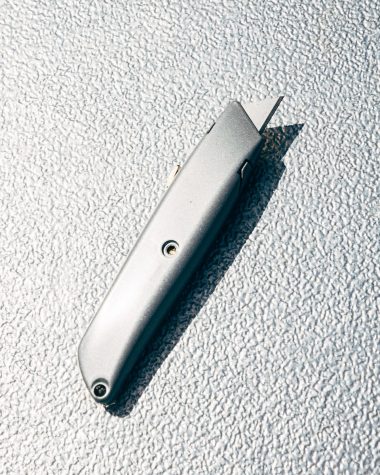The Cutting Edge Technology Of X-Acto
The History of X-Acto and How It Works
Source: Anna Shvets
Photo by Anna Shvets
X-Acto knives have existed since 1917, and by the time of writing this, that’s just about 105 years ago. But not all that time were the knives used by hobbyists and designers.

These blades are known for their precision and sharpness, so it’s no wonder that it started out as medical blades.
The X-Acto company started in New York, 1917, by a Polish immigrant named Sundel Doniger. It produce almost exclusively medical syringes and blades with removable blades for around 15 years. But it wasn’t until 1930, when an designer needed to crop some advertisement, and so asked Doniger for one. He gave the designer one of the knives, only to find that it was perfect for cutting the design.
The original knife had a solid aluminium handle and a carbon steel blade. The next kind of knife came in 1987, called the “Gripster” It was a variation on the original knife, but instead had a soft hollow handle. In 1991, a new knife was made, it had a wider body, was angled and a retractable blade. This one was particularly used for cutting foam boards.
The X2000 knife from 1996 had a sleek look, with an ergonomic grip. X-Acto released the X-Life blade in 2006, of which the blade was changed to keep a sharp edge longer. The Retract-A-Blade knife No. 1 from 2010 had made the blade retractable, and gave it an anti-rolling grip. The X-Series blade from 2011 was made to be very sharp, and have enhanced durability.
An interview with Matt Zuby, associate product manager for X-Acto explains how the design evolved. For the most part, the knife stayed the same, with small changes to improve the design. For example, the blades from the 2011 Z-series aimed to combine extremely sharp blades with long lasting blades.
Every two years or so, the X-Acto company conducts surveys to find out what people think of their products, and what they want. The groups surveyed are typically people who use their products often, like architects and designers. They will also do this on a general audience, or a select focus group if they wanted to make something more geared towards that. A request that is typically brought up is an ergonomic grip. To make something like this, first they’d use a CAD software to design the product. Then, using a model, they would test it on various focus groups in order to see what needs to be improved.
Nowadays, the X-Acto blades are made of high-quality carbon metal, with a rust-resistant finish. The knives are sorted by the four different handle types, and will only fit on the one that it is made for.
Related Stories:
- https://www.smithsonianmag.com/arts-culture/80-years-x-acto-has-been-cutting-edge-edge-cutting-180950050/
- https://www.architectmagazine.com/technology/products/a-slice-of-design-history-how-x-acto-built-a-better-knife_o
- https://www.wired.com/story/how-x-acto-knife-went-from-battlefields-to-craft-rooms/
- https://www.xacto.com/about-us.html
- https://selectsafety.net/history-of-x-acto-knives/
Take Action:
- Where you can buy an X-Acto knife:
- https://www.michaels.com/product/x-acto-number-one-precision-knife-10223576
- https://www.walmart.com/ip/X-Acto-No-1-Basic-Light-Duty-Knife-1-Each/19703023
- https://www.xacto.com/
- https://www.amazon.com/X-Acto-XZ3601-X-ACTO-Knife-Safety/dp/B005KRSWM6
- Tips for using X-Acto knives:
- https://selectsafety.net/how-to-use-an-x-acto-knife-safely/
- https://www.xacto.com/support/faqs
- https://commonsparrows.com/how-to-cut-a-straight-line-with-an-xacto-knife/
- https://offbeathome.com/using-an-x-acto-knife/















